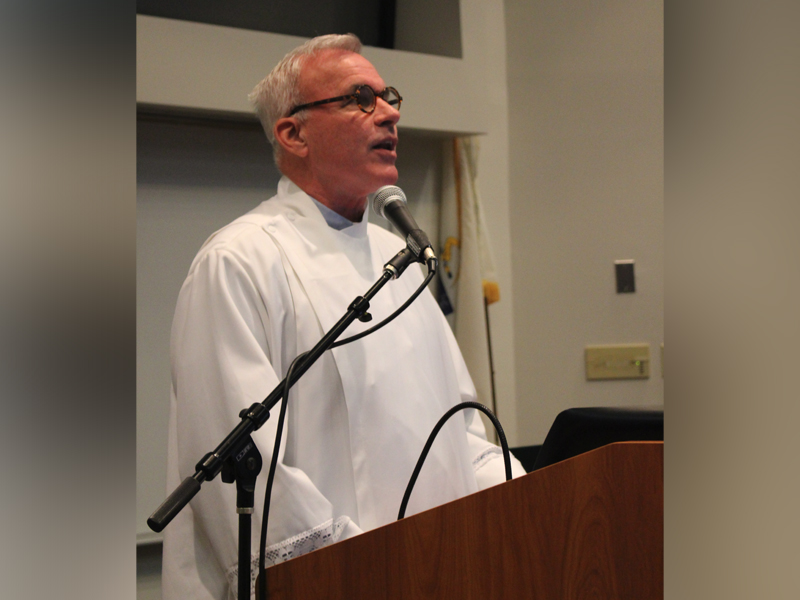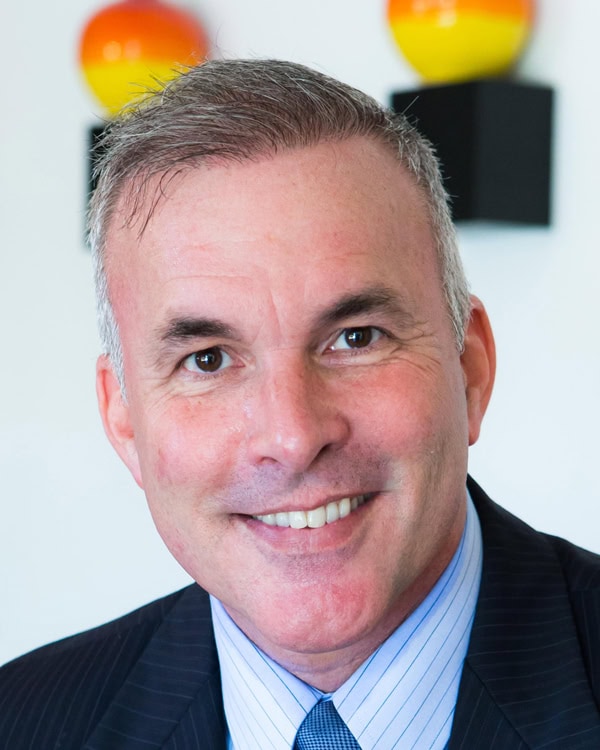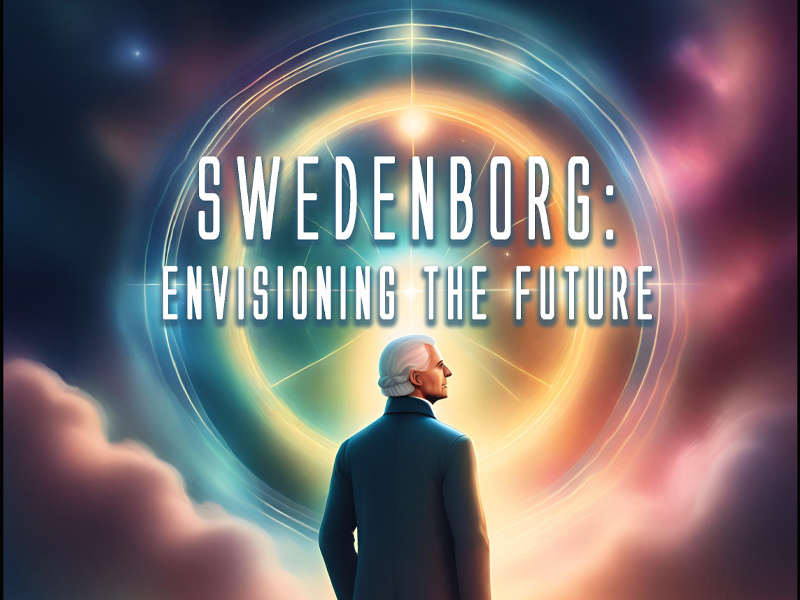Convention Preacher Sermon
By Rev. Rich Tafel
In all my years of preaching, there’s one thing I have said that really gets push back. It’s not the topic I expected. Mind you I’ve preached on the most controversial topics you can imagine.

In fact, I preached a whole sermon series called “Sermons Ministers Won’t Preach On” and challenged members to send in their requests. I preached on abortion, guns, trans, gays, and race. You name it I’ve preached on it. If you are interested, you can check them out on our website. And some of those topics got push back, but there’s still one phrase that whenever I say it, I’m sure to get push back.
Can you guess what is so radical? What really makes people angry? Are you ready? The answer: Optimism—the theme of this year’s convention.
Nothing makes people more angry then when I say, “Things are getting better. People get furious when I say, “I’m optimistic about the future. I’m optimistic about the future of our church.” I finally had to preach a sermon called “Things are Getting Better,” where I painstakingly went through data from poverty to death rates. You name it and things are getting better in all the most major aspects of our lives.
Things are getting better, and they will continue to get better.Yet we don’t believe it. I know this not just at a data level, but a soul level.
When did God tell us? Revelations.
This concept of spiritual evolution is one the most incredible gifts of the Swedenborgian tradition. We get a peek at what happens next in the world. It tells us that God is always working through humanity to make things better. This is a reassuring teaching. Swedenborg taught us interpretation that led to some dramatic predictions in the late 1700s that the world was evolving into a new, better age.
This might sound like heresy at a Swedenborgian Convention, but I encourage you not to believe something just because Swedenborg said it. Run it by your own experience and intuition. What do you see, hear, and feel that’s true? Revelations as source of prediction has always been confusing if read literally, but this has not stopped every generation of Christian scholars from interpreting it. And most got it wrong.
In our own time, there’s been a book and movie series that millions of Americans watched and believed called the “Left Behind” series where the anti-Christ seeks to destroy the earth. Many of the conspiracy theories today are impacted by this view of Revelations. Much trauma. Swedenborg says these predictions are all missing the message and that the second coming foretold in Revelations is something that will happen within us, not a physical return of Jesus.
The religious leaders of Jesus’s day asked him when the kingdom of God would come, “The kingdom of God does not come with observation; nor will they say, ‘See here!’ or ‘See there!’ For indeed, the kingdom of God is within you.”
Yet most Christians look for a physical event, missing the spiritual event Jesus spoke about.
What are the predictions? Before we look to the future, let’s look back to see just how Swedenborg’s interpretations and predictions worked out. Let’s look at just four major predictions made based on Revelations. What does he say is happening in that new epoch?
The Old Church Must Die
First, there’s a mention of seven plagues in Revelations 15.
15 I saw in heaven another great and marvelous sign: seven angels with the seven last plagues—last, because with them God’s wrath is completed.
I’m glad we don’t read this literally. This symbolized the sad state of affairs and evil in our current world that needs to be transcended. The Christian Church lost its way. Instead of preaching love, truth, inclusion, and justice, the Christian Church focused on judging and condemning, and lost the message of love of Jesus.
Swedenborg predicted that the old church would lead to a time of chaos when long hidden evils would be revealed to be dealt with bringing forth a new spiritual age and a new church. In a story I read this week, it was reported that over a half million Catholics in Germany have left the church last year over the issue of child abuse scandals.
Swedenborg’s prediction of the death of Christianity is a prophecy being fulfilled before our very eyes. This death of old church would lead to a period of chaos and exhaustion. Chaos is necessary to lead to exhaustion when, after doing things the way we always did them, we are ready to align to God’s providence.
His first prediction feels very real to me. The old church is dying, and we can feel the chaos and we are impacted by that to the extent we imitated old church.
Let’s look to prophecy number 2.
Inclusive of all Faith Paths
In Revelations 21, we read that the Holy City has twelve gates.
12 It had a great, high wall with twelve gates, and with twelve angels at the gates.
What an odd detail read at the literal level. But at the spiritual level the Holy City has twelve gates symbolizes a new period of religious pluralism where people of different religions can all find a gate or way into this Holy City. People get to God differently and that’s great. Here again, we see this prophecy being played out before our eyes.
In Swedenborg’s time you could be killed for having the wrong Christian belief. Christian didn’t just kill other religions they killed other Christians. A century after his death we have the rise of an ecumenical movement. The game changing event was the World Parliament of Religions that took place at the 1893 World’s Fair. This introduced eastern religions to the United States. We should be proud and not surprised that the event was the brainchild of Charles Bonney a Swedenborgian.
Ecumenism is now very normal today. I’m in my eighth year representing our denomination at the NCC, who itself is a group respecting different faith paths, and within that there are six interfaith dialogues taking place. Most of the mainstream denominations now have ecumenical officers who attend inter-faith meetings.
But even there, among my very progressive, mainline denomination colleagues, I ask, “I know you are a leader in inter-faith dialogue, but at the end of the day, do you believe they are saved?” To a person, they have told me, “No, you must accept Christ to be saved.” There’s still work to be done. Our ability to see that there all faith paths are good, resonates with the rising generation who intuitively know this is true.
So far Swedenborg’s prophesy is two for two. What’s the third prophecy?
Increase in Equality
In the next verses of Revelations, the Holy City in another strangely specific verse, he describes as a square that is equal on all sides. Why all of these measurements mentioning equal sides?
21 16 The city was laid out like a square, as long as it was wide.
This symbolism represents that in this new epoch, there will be a new equality we’ve never experienced before with greater justice. Did this prophecy pan out? Here again we see dramatic shifts taking place shortly after Swedenborg wrote that this would come about. Only six years after Swedenborg’s death democracy sprung up in the United States leading to a new democracy movement around the world, where today democracy is more the norm than the exception.
Within a century, slavery, which was ubiquitous, would be abolished around the world. The earliest followers of Swedenborg were the first abolitionists. The story of Carl Wadström is an amazing one.
A founder of the Swedenborgian church in Sweden, Wadström, was a central figure in the British abolition movement. He published an anti-slavery tract. But his big impact came from his engravings. If you’ve seen that image of the slave ships with people stacked next to one another. This early social justice campaign was a game changer and the leaders of the abolitionist movement ordered 500 copies of one of these engravings to be distributed among influential people. This story represents a living example of how this prediction of greater equality and justice would roll out.
The transformation of acceptance of LGBT people in my lifetime is breathtaking. I know older friends who, in the 1960s, were given electroshock therapy to become straight. Where was this done? Some backward fundamentalist camp? Nope, it took place when they were undergraduates at Harvard.
In the mid-1990s, I embarked in a series of college debates with the Christian Action Network on the topic of gay marriage. The one thing my opposition had against me in every debate was that only twenty-four percent of Americans support same-sex marriage. It appeared to be an issue that would never change.
Just thirty years later, same-sex marriage is the law of the land and seventy percent of Americans now support it. Equality is in the move. There remains chaos, but things are getting better.
Swedenborg’s understanding of Revelations is three for three. What else was predicted in this chapter in Revelations?
No Temple
The fourth prediction that we read in Revelations that there is no temple in the Holy City.
21 22 I did not see a temple in the city, because the Lord God Almighty and the Lamb are its temple.
This symbolizes that no one religion will dominate, but instead all will be welcomed. Christians, he says, had done a generally poor job of carrying through the true message of Jesus, and other faiths will present insights as well. He suggests that humanity will begin to see ourselves more as a global community where we care for the world.
This new connection to God will come to all people who act in compassion and truth in service to humanity. The rise of young people saying they are spiritual not religious is an example of this shift. Not one of the new members of my community was raised in the Swedenborgian faith. They each want to do good in the world and live a life of purpose. They are overwhelmingly spiritual but not religious.
Here again, Swedenborg’s insights on the predictions told in Revelations is unfolding before our eyes. Things are getting better.
Recognition
But hold on. If Swedenborg’s teaching of the second coming is so true, why has no other voice in Christianity see this? Why are we so small?
The answer is that they have. We have a leadership catalyst role to play. We are not the new church. The new church is happening everywhere.
The well-read Catholic Priest, author, Father Richard Rohr shares a view that the second coming wasn’t Jesus coming down but new evolution in the spiritual potential in each of us. Does it sound familiar?
In his book The Cosmic Christ he writes,
The mystery of Christ is revealed, and the Christ “comes again,” whenever you are able to see the spiritual and the material coexisting, in any moment, in any event, and in any person. God’s hope for history seems to be that humanity will one day be able to recognize its dignity as the divine dwelling place, which it shares with the rest of creation. I don’t know when it will happen or what it will look like to reach the tipping point, for the Christ Mystery to come to fullness.
…I suspect “the Second Coming of Christ” happens whenever and wherever we allow this to be utterly true for us. We’re still living in the in-between right now, slowly edging forward, with much resistance. … “It is just a matter of time until all false power falls apart,” and that “this is the gradual ‘second coming of Christ’” (198–9).
This new age is being experienced everywhere. What an amazing future is predicted. I’m optimistic.
We’ll see a period when all faith paths will be respected. We’ll see a greater movement toward equality and justice. We’ll see time when all of humanity will have access to Christ’s consciousness. This framework of understanding what’s happening in the world is the greatest gift we have received through the teachings of our church.
Yet, Swedenborg gives us the caveat that even the angels can’t predict the exact future. Why is that?
Because God is in a co-creative relationship with humanity, and this is ruled by our freedom to do good or not. The degree that we are engaged in good is the degree we are bringing heaven to earth. In other words, what we decide to do daily has an impact on what’s next.
When each of us here decide to attend Convention, serve on a committee, accept a call, call a pastor, serve the poor, counsel the lonely, write a check, or sleep on an uncomfortable plastic mattress on a college campus—you are bringing in the new church in a time of chaos.
Whenever any of us decide to choose inclusion over exclusion you are bringing in the new church. Whenever any of us decide to become stop judging other based on difference or different, we are bringing in the new church. Whenever we say “Yes” to whatever God is calling you to do now we bring in the new church.
We cannot avoid this period of chaos, but we can be the guides and leaders for others grappling in it. Being optimistic is not being naive about evil, but we still remain optimistic and involved.
Helen Keller described this best in her book on optimism when she said,
My optimism, then, does not rest on the absence of evil, but on a glad belief in the preponderance of good and a willing effort always to cooperate with the good, that it may prevail.
I try to increase the power God has given me to see the best in everything and everyone and make that “Best” a part of my life. The world is sown with good; but unless I turn my glad thoughts into practical living and till my own field, I cannot reap a kernel of the good.
We have our role to play. Revelations promises us a beautiful future beyond our imagination saying:
“Look! God’s dwelling place is now among the people, and he will dwell with them. They will be his people, and God himself will be with them and be their God. ‘He will wipe every tear from their eyes. There will be no more death’ or mourning or crying or pain, for the old order of things has passed away.”
I’m optimistic for this church. Let me end with a prediction of my own. Out of this little community will come powerful shifts in the unfolding of the new church community in ways that we cannot yet comprehend. We just need to keep following God’s guidance and do our part. Amen.
Read the full issue of the Convention Special 2023 Messenger

Meet Rich Tafel
Rev. Rich Tafel is the pastor of the Church of the Holy City in Washington, D.C. He is a strategist who works at the intersection of faith, business, and politics to build bridges bringing together unlikely coalitions to solve some of the world’s greatest challenges.



